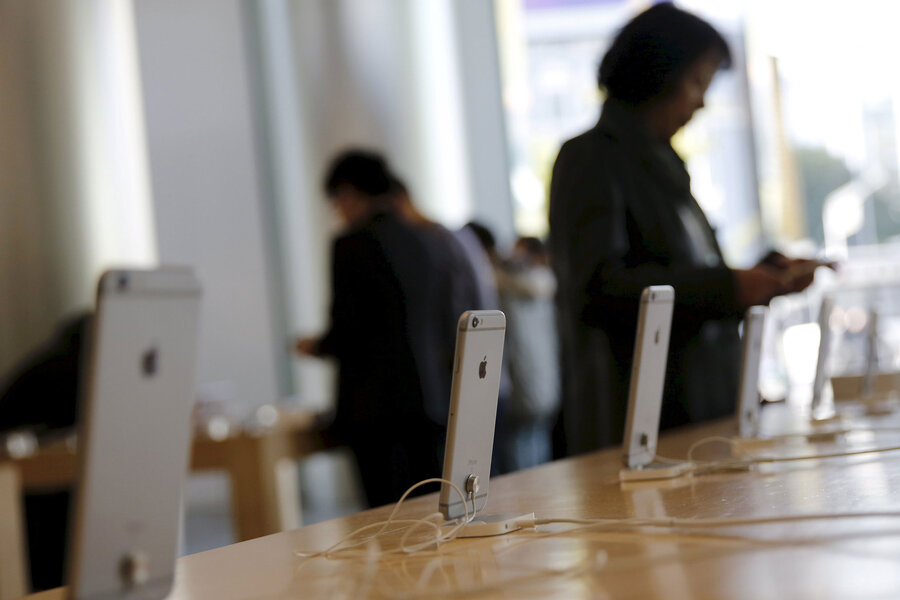New iPhone in March: Why bigger isn't always better
Loading...
Bigger is not always better, and rumors suggest Apple's next foray into iPhone design will be smaller.
The next iPhone will likely be four inches long, an "enhanced" special edition called the iPhone 5se with a March release by Apple, Mark Gurman reported Friday for 9to5Mac.
A return to a smaller iPhone suggests Apple isn't simply pushing out larger smartphones (due to bigger screens) that have proven popular with competitors, but sees there remains a niche for smaller devices.
Apple's decision to scale down its iPhone's size might be seen as a half-step back to an older consumer tech philosophy. For decades, success meant bringing computers from the size of a room, to a desktop, to a person's lap, and finally to a hand-held device. The clock turned back when it reached the tiny iPod Nano, as consumers wanted screens large enough to watch video and manipulate touch-screen devices.
"A four-inch iPhone would probably make some users with small hands and even smaller pockets very happy, but there’s a reason phones keep getting bigger — they just sell better," wrote Ryan Whitwam for Geek. "Most consumers don’t seem to mind using two hands to operate their phone."
Why then is Apple experimenting with smaller gadgets again? It could partly stem from a growing interest in wearable technology, which already promises a new kind of convenience, according to some buyers.
"The big plus is that it’s touching your skin and so I will not miss a notification," says Jake Faulkner, who purchased an Apple Watch after graduating college and starting work in Salt Lake City, Utah. "You can wear it and you don’t necessarily have to touch it . . .It helps you to multitask."
Mr. Faulkner is like many Apple Watch users in that he does not use all the features available, but rather he wears it as a companion to his iPhone. Apple could be trying a smaller model of iPhone as a prequel to further experiments with how users are willing to interact with technology.
"Apple has popularised existing technologies four times: with the Macintosh computer in 1984, the iPod in 2001, the iPhone in 2007 and the iPad in 2010," reported the Economist. "The launch of the Apple Watch points to a broader story: high expectations that wearable technology will soon take off."
Apple is not the only company experimenting with size and function. Microsoft has advertised its 12-inch Surface Pro 3 as "the tablet that can replace your laptop." PC Magazine gave the device top ratings, although Matthew Buzzi wrote that Microsoft's efforts to push the consumer paradigm for how devices should be used – like Apple's – were seeing mixed results.
"The Microsoft Surface line of tablets has been fairly divisive," he wrote. "For every evangelist there are plenty of skeptics who doubt the device can truly replace a laptop."
Faulkner has transitioned fully into Apple but is also skeptical of the trend to boost the iPhone size. He says friends who own the larger iPhone 6 have regretted it, though, suggesting the popularity of skinny jeans as a cause. His enthusiasm lies in wearable technology.
"If they came out with an Apple shirt where you could just change the design, I think that would be pretty cool," Faulkner says.






